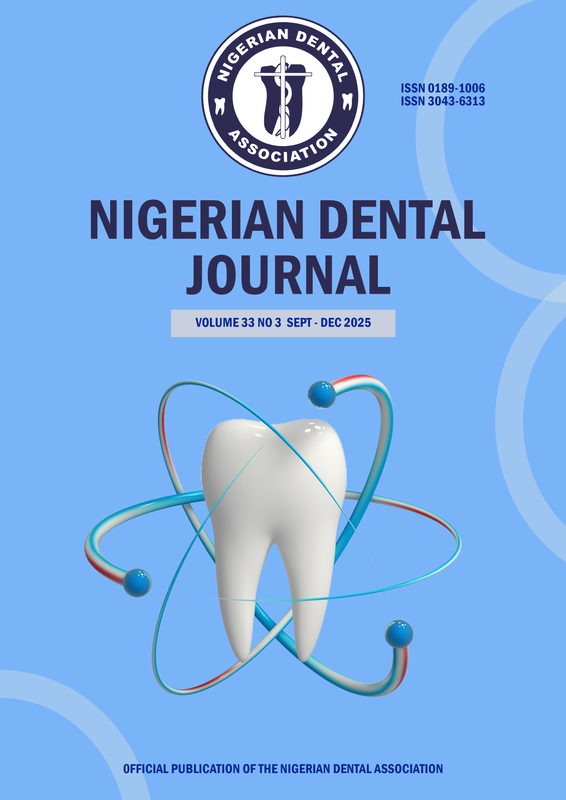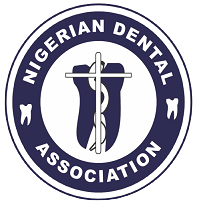Antimicrobial Activity of Selected Yoruba Chewing Sticks and Branded Toothpastes on Bacteria Isolated from Carious Teeth
DOI:
https://doi.org/10.61172/a9srbr16Keywords:
Yoruba chewing sticks, Branded toothpastes, Tooth decayAbstract
Objectives: Dental decay and associated toothache infection causes pains and discomfort; and are characterized by many symptoms. It may be due to bacterial infection or many other causes.
This study determined the antimicrobial activities of methanol extracts of three selected Yoruba chewing sticks; Sorindeia warneckei, Garcinia kola, Veronia amygdalina and aqueous extracts of three branded toothpastes; NCT, MCL, and OLV on isolates of bacteria from cases of toothache infection
Materials and Methods: A total number of thirty (30), comprising three different species, biochemically characterized isolates from tooth ache infection; Streptococcus oralis (10), Lactobacillus spp(10) and Streptococcus mutans(10) were collected on slant from a dental clinic in Ibadan and confirmed on Sheep blood agar medium fortified with serum, and deMan Rogosa Sharpe (MRS agar). The isolates were Gram stained, with other biochemical identification tests. The isolates were challenged with methanol extract of selected chewing sticks and aqueous extract of branded toothpastes using standard broth dilution method to determine its MIC’s and MBC’s. The chewing sticks extract were screened for secondary metabolites using standard methods.
Results: The percentage crude extract yield from initial weight of 200g of Sorindeia warneckei was found to be 9. 25%, while Garcinia kola and Veronia amygdalina exhibited 6.8% and 5.7% Alkaloids, anthraquinones, tannins, flavonoids and saponins were present in 3 selected chewing sticks . Statistical analysis by Anova test of MIC and MBC methanol extracts for different concentrations of 3 chewing sticks and branded toothpastes evaluated showed significant inhibition of growth for 3.125, 12.56, 25 µg/mL as indicated in S.oralis1, Lactobacilli spp15 and S.mutans 30 for Sorindeia warneckei, 6.25, 3.125,6.25 µg/mL for Garcinia kola and 25, 12.5,25 µg/mL for Veronia amygdalina and when compared to 12.56 and 100 µg/mL MIC aqueous extract of 3 branded tooth pastes. The aqueous extract of toothpastes determined showed lesser antimicrobial activity than the methanol extract of the three chewing sticks from the MIC’s and MBC’s point of view.
Conclusion: The methanol extract of selected chewing sticks explored showed competitive antimicrobial activity in comparison with branded toothpaste. The antimicrobial constituents in the methanol extracts of the selected chewing sticks hold the potential for clinical application and can be incorporated into conventional household tooth pastes.
Downloads
References
1. Marsh, P.D. Are dental diseases examples of ecological catastrophes? Microbiology 149, 279-294(2003).
2. Farogh G, Monika R, Mohini SR, Manisha S, Neha S, Anushree V, Abhimanyu KJ. In vitro study to investigate the antimicrobial efficacy of different toothpastes and mouth rinses. Research J of Pharmaceutical, Biological and Chemical Sciences.5(2):245-257(2014).
3.Nestor Olayinka Hollist. A collection of Traditional Yoruba Oral and Dental Medicaments. ISBN:978-2015-99-7(2004).
4.Daniyan S.Y, Abalaka . in a Secondary Health Care Institution, Nigeria.Shiraz E-Medical Journal. ;12(3)(2012).
5.Kleinberg,I. A mixed-bacteria ecological approach to understanding the role of the oral bacteria in dental caries causation: an alternative to streptococcus mutans and the specific plaque hypothesis. Critical Review in Oral Biologyand Medicines 13. 108-125(2002).
6.Antwi-boasiako C, Abubakari A.Antimicrobial and phytochemical properties of crude extracts of Garcina kola heckle stems used for oral health. Research Journal of Pharmacology. 2011;5(5):68-76. ISSN 1815-9362 (2011).
7.Bowden,GHW. The microbial ecology of dental caries. Microbial Ecology in Health and Diseases 12, 138- 148(2000).
8.Kroes, I., Lepp, P.W. and Relman, D.A. Bacterial diversity within the human subgingival crevice. Proceedings of the National Academy of SciencesUSA 96, 14547-14552.(1999).
9. AI weblink in Google search. General overviews on Olive tooth paste (2025).
10.Ogundipe,OO, Moody, JO, Houghton PJ, and Odelola, HA. Bioactive chemical constituents from Alcornea laxifora(benth) pax and Hoffman, Journal of Ethnopharmacology, vol 74 no 3pp 275-280 (2001).
11. Osho A, Adelani OA.The antimicrobial effect of some selected Nigerian chewing sticks on clinical isolates of Candida species. Journal of Microbiology Research. ;2(1):1-5. p-ISSN 2166-5885(2012)..
12.Ugoji E, Egwari LO, Obisesan B.Antibacterial activities of aqueous extracts of ten African chewing sticks on oral pathogens. Nig. Journal of Internal Medicine.;3(1):7-11(2000).
13.Lara O Orafidiya, Ezekiel O Akinkunmi, Fadekemi O Oginni, Ajibola Oluwamakin. Effectiveness of extracts of the root of Zanthoxylumzanthoxyloides (Linn) Waterman (Rutaceae) formulated as toothpastes; Available:https://www.researcgate.net/publi cation/233894316 (2010).
14.Rotimi VO, Mosadomi HA.The effects of crude extracts of nine African chewing sticks on oral anaerobes.J Med Microbiol. ;23(1):55-60(1996).
Downloads
Published
Issue
Section
License
Copyright (c) 2025 Olufemi Lionel Okunye, Bunmi Comfort Kotun, Caroline Olufunke Babalola, John Olabanji Daodu, Joshua Seun Ayedun, Samuel Friday Ibitoye, Brendan Iloka, Adeyemo Olumuyiwa , Eunice Adewole Oluwaseun, Igbokwe Christopher Ogbonna, Ememabasi Precious V-Thompson, Peter Omotayo Ajayi, Morenike Eunice Coker

This work is licensed under a Creative Commons Attribution 4.0 International License.
Open Access Statement
- We became fully Open Access since January 2023.
- Our new and archived materials are available free of charge on open basis and under a Creative Commons license as stated below.
Copyright statement
Copyright © 1999 The authors. This work, Nigerian Dental Journal by Nigerian Dental Association is licensed under Creative Commons Attribution 4.0 International License.

